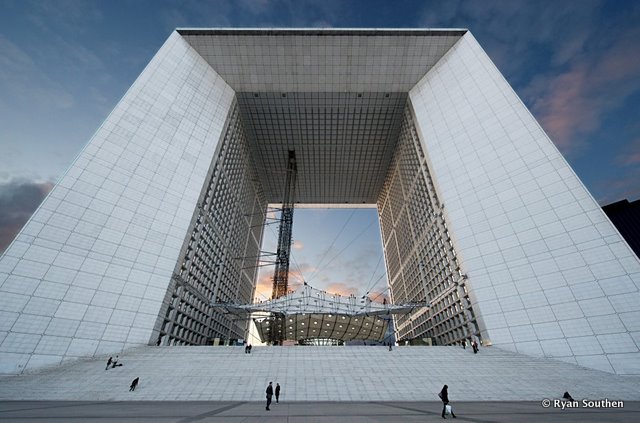Before I went to visit La Defénse, it remained in my mind’s eye as a looming, monumental structure–an abstract, geometric form with no relationship with its external surroundings apart from its linear correlation with the Arc de Triomphe. I was inspired to take a trip there after seeing the photography of Ryan Southen. In a rarely seen perspective, Ryan captures the monumentality of the Grand Arch from below. The minuteness of humanity and the solitude of the silhouettes left me wondering about the people who traversed through and what happened behind the glass office windows.
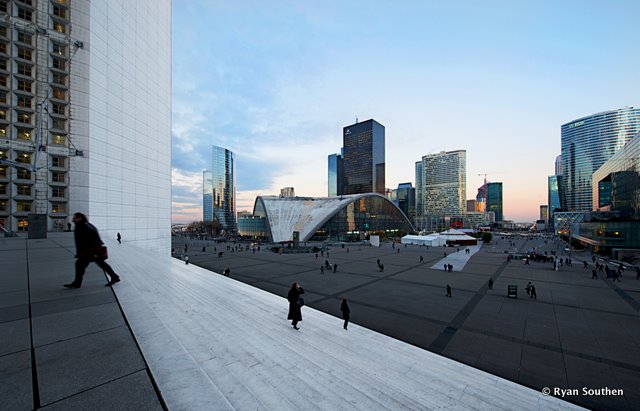
La Defénse is typically photographed at a distance and during daytime. I believe this is a conscious effort by photographers to emphasize the linearity of the axe historique (historical axis) and the monumental height of the Grand Arch against the Paris skyline. A quick Google image search suggests that upwards of 80% of photographs of La Defénse on the internet are shot during the day. In contrast, the Eiffel Tower and the Arc de Triomphe are depicted during the day only about 55% of the time.
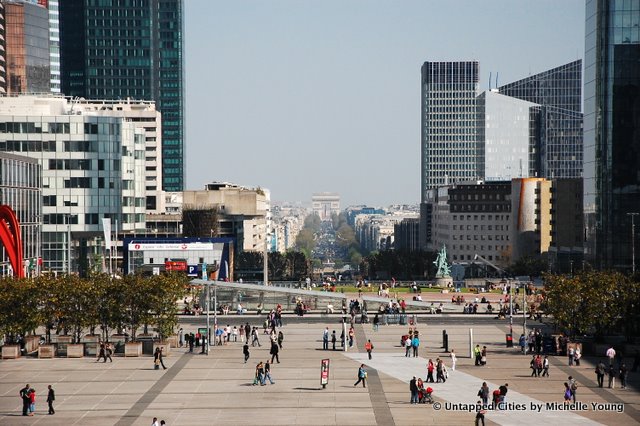 View of the axe historique from the Grand Arch to the Arc de Triomphe
View of the axe historique from the Grand Arch to the Arc de Triomphe
In a publication for EPAD (the Public Establishment for Installation of La Défense), Timothy Fox contends that “the Grand Arch marks the terminal point of the axis up to this point in history; its form, however, continues to project the vanishing point into the west by the use of a penetrable structure. The door has been left open for the continuation of this historical perspective.” Based on the inscription under the arch, it appears that the architectural intent was not only political but social: “Idea, an open cube, a window to the world, a symbol of hope for the future, that all men can meet freely.” But what is the character of the public space around the Arch? And what was destroyed in order to create this city at La Defénse?
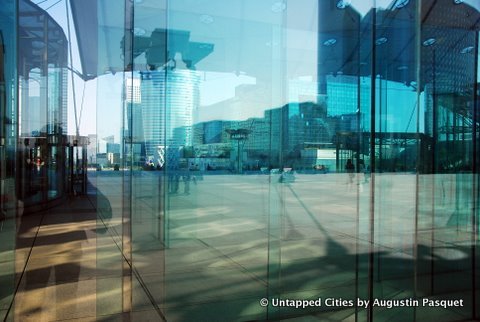 Not all the architecture lends towards clarity at La Defense
Not all the architecture lends towards clarity at La Defense
The La Defénse business district was developed beginning in 1958, and gradually displaced the farmland, factories and slums that once existed there. Today, it is home to the second tallest skyscraper in Paris after the Tour Montparnasse. An ambitious 9 year plan is underway to build new skyscrapers and convert La Defénse into a multi-use city. The Grand Arch was constructed in 1989 after being selected in a national design competition initiated by President Franà§ois Mitterrand. It was designed by architect Johann Otto von Spreckelsen and Danish engineer Erik Reitzel. The roof of the arch is now an exhibition center, which houses the alternate competition designs.
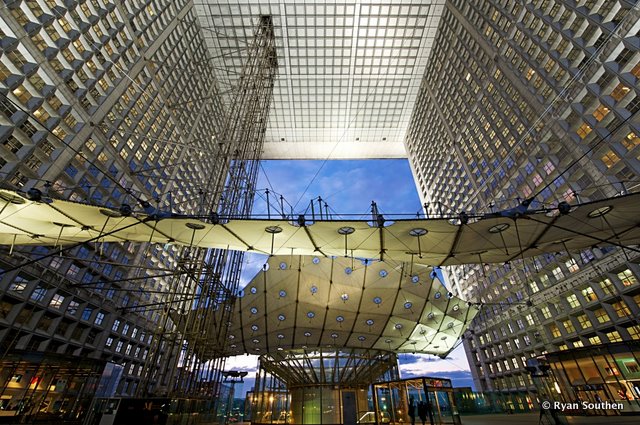 Interior of Grand Arch
Interior of Grand Arch
Regardless of the critique, the Grand Arch nonetheless promotes a certain amount of public participation with the space. Visiting on a sunny afternoon, the wide staircase leading up to the arch was populated with a range of visitors: tourists, children, local teenagers, pidgeons.
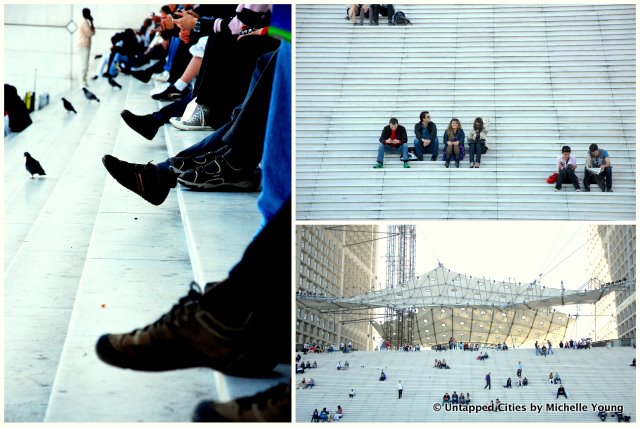
Equally interesting was how the Musée de La Defénse chose to represent the area via a three-dimensional map, emphasizing the importance of height in this area. And on the nearby skyscrapers we have a rooftop garden and a man that can leap between buildings
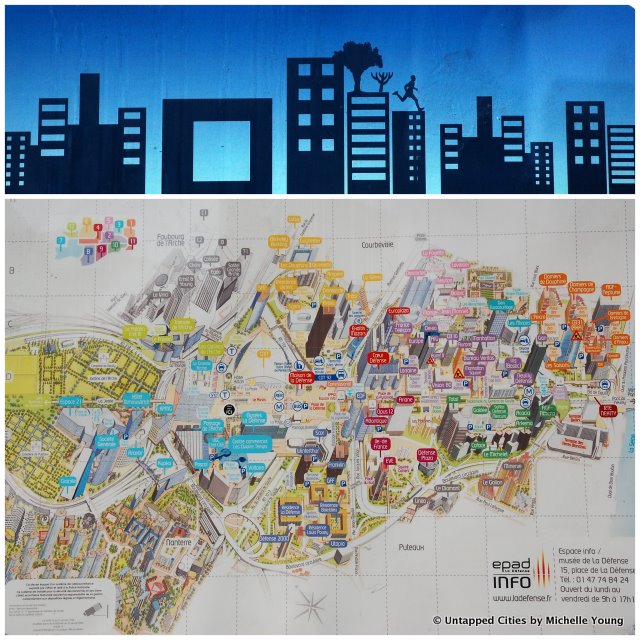
Check it La Defense by Metro: M1 to La Defénse.
To see more of Ryan Southen’s work, go to flickr, Exposure Manager and at www.ryansouthen.com.
Get in touch with the author @untappedmich.






